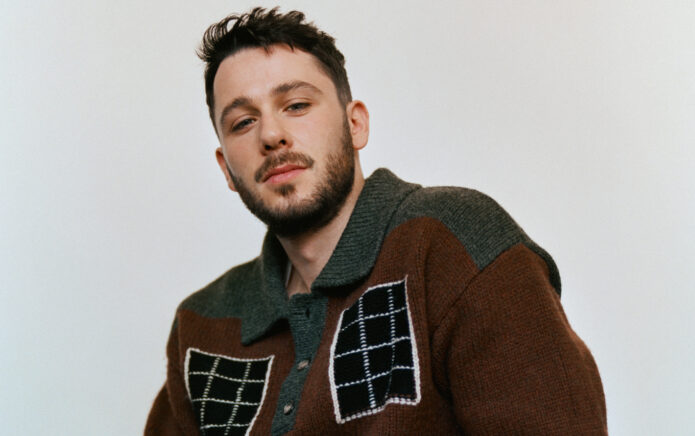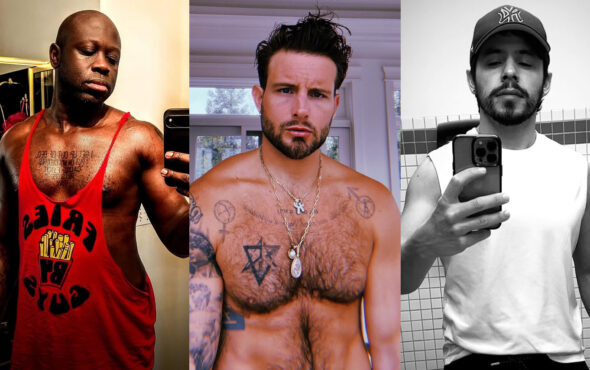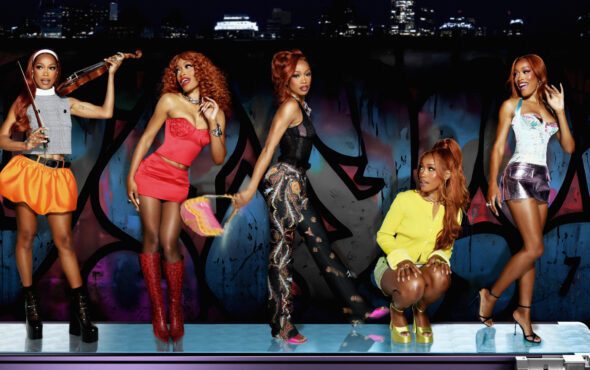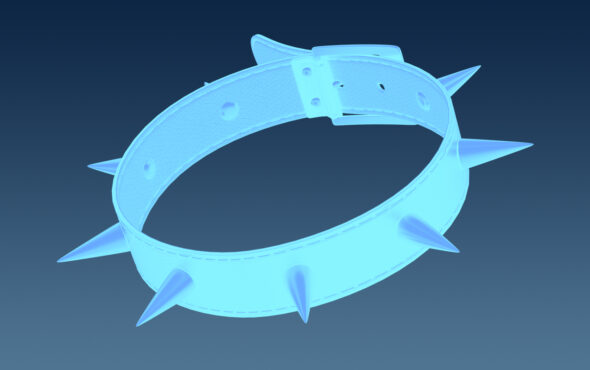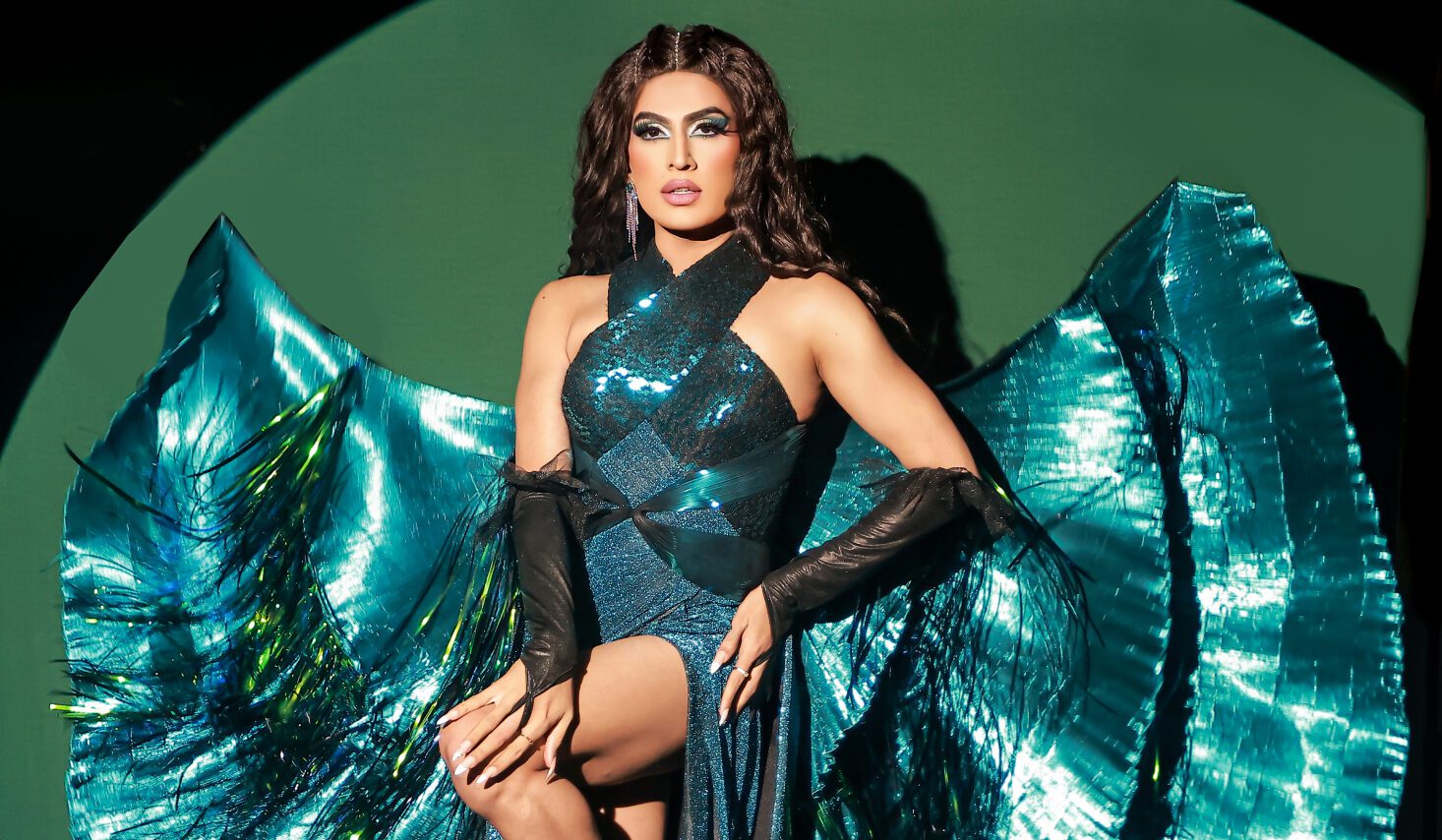
“I have to be present,” proclaims Rani KoHEnur. “I have to, because how many people [in India] changed their perspective by looking at me on national television? I became the person I wanted, urged and craved. I had to. I didn’t have a choice.” One of the most prominent LGBTQ+ people in her home country, Rani memorably made history as the first drag artist in India to participate on a reality singing show with her appearance on its longest-running game show, Sa Re Ga Ma Pa.
Last year, she continued to “nama-slay” on an international scale when she was announced as a contestant on Queen of the Universe, World of Wonder’s singing competition that collects some of the world’s fiercest drag vocalists to compete for $250,000. Hosted by Graham Norton with pop diva judges Michelle Visage, Trixie Mattel, Leona Lewis and Vanessa Williams, Rani – who already boasted over a million followers on Instagram – became an immediate fan-favourite thanks to her powerhouse pipes, infectious breakup duet with winner Grag Queen and deadpan sense-of-humour.
Although she didn’t conquer either competition, Rani says the real “reward” for her isn’t the cash prize: it’s the overwhelmingly positive reactions from fans she meets “on a daily basis”. “People have come up to me and actually said, ‘We were homophobic and transphobic before we saw your performance,’” Rani tells GAY TIMES. “Imagine someone who could have chosen to attack you standing there and saying, ‘Thank you for changing my perspective.’ If I can be the medium for that change, then I’ll be it. […] That is my compensation. That is giving me all I need to wake up the next day and slay harder.”
With three films on the horizon, as well as a “party” anthem with Grag Queen and a brand new YouTube series which sees the star interview the “real sheroes of the trans community,” we caught up with Rani to discuss her drag origins, how the art-form “empowered” her to live authentically as a trans person and why the world ‘needs’ Drag Race India. “I’m going to host it,” Rani says defiantly, “and I will definitely open and close [each episode] with a performance because I can.”
Rani, you were so, so brilliant on Queen of the Universe. Not only did viewers fall in love with your vocals, but they fell in love with your sense-of-humour and wit. How has the series changed your life?
First of all, thank you! Your publication is, by default, one of my favourites because you tell such wonderful stories. I was most excited about the fact that I could unleash Rani and the KoHEnur experience on the world, and better late than never that we had an Indian queen from India on any sort of drag show internationally. We don’t have this in India, and as unfortunate as it is, we don’t have many spaces for drag artists. It was also very surreal for me to look at Trixie Mattel, Michelle Visage and Vanessa Williams, especially, and be in the same room as them, as well as queens from all around the world. I was very happy to see the representation and the diversity on that stage. And let’s not forget your local legend Sir Graham Norton! I watched The Graham Norton Show on YouTube because we don’t get it on television here, just like we don’t get a lot of things. It’s very limited queer content in India, so I think for me, to become that representation for the next generation, it just adds fuel to the hustle.
What was the response like from Queen of the Universe viewers, particularly those who are South Asian and Indian?
You won’t believe it. I was in America just a couple weeks back and I toured different cities. The South Asian community… They are so with it. They watch, eat and breathe drag. Also, the cis-het people that came to watch the show, I was shocked! They don’t see it as a gay or trans or queer show, they see it as a variety show where it’s just art and performance. There are no labels. Unfortunately, I don’t think we’re there in the Indian industry, which is why I’m more than just a “drag performer”. I’m a performer first and everything later. I want the heteronormative majority to understand that this is an art-form. When I went to America and saw people enjoying themselves when I sang Bollywood, in Europe as well I might add, there’s a lot of South Asians and Brown communities and they love the fact that we are authentic. This is a Sarai, and I love wearing the Indian Sarai and garments and amalgamate that with Western influence. It’s not just this or that, it’s both. It’s a party. It’s a production! When I saw them loving it, I came back much stronger to my country and said, ‘Now, I have to hustle even harder. I want my country to be like this, where there’s no stereotypes or discrimination against trans people, queer people, drag queens.’ I’m getting there, hopefully, fingers crossed.
As the first mainstream drag artist on television in India, you have broken boundaries for, not just the drag community, but the entire LGBTQ+ community in the country. Have you ever witnessed your impact on South Asian queer people first-hand?
Honestly, there are a lot of people who I meet on a daily basis. People have come up to me and actually said, ‘We were homophobic and transphobic before we saw your performance.’ Imagine someone who could have chosen to attack you standing there and saying, ‘Thank you for changing my perspective.’ If I can be the medium for that change, then I’ll be it. I also receive messages from kids from remote parts of my country that tell me – I have to hold myself from not crying – ‘We want to live just by looking at you and your story. It gives us hope.’ Those are my rewards. That is my compensation. That is giving me all I need to wake up the next day and slay harder. Nama-slay harder!
Can you recall the first time you ever performed in drag?
I think I was about four-years-old when I was first in drag, and we didn’t know what to call it because I was in an all-boys school and we used to have these performances and automatically the female parts used to come to me. That was basically at every event, competition and celebratory functions. That was the first time, technically, I was in drag.
And when did you first perform as a drag artist professionally?
In 2014, around that time. There was a lot of conflict in me because, back then, I didn’t identify as a trans person. I identified as a cis gay male, but nothing about me was straight, ever. It was for South Asia’s biggest queer film festival. 2015 was my debut in theatre. I’m trained and have been working for the past 16 years, but 2015 was when I did drag professionally and toured cities. It was for Merchant of Venice and the director was like, ‘I want to start the play with a drag performance,’ and I sang a sonnet in three octaves. A sonnet! Imagine? If Shakespeare were alive he’d probably be like, ‘Bitch wow, I wanna do this too.’ Since then, I started performing more and hosting corporate events and doing live shows in drag. In 2016, I was invited to perform at the same hotel I’m in now and that’s where Rani was born. So, Rani is six years old!
Did the art of drag help you come to terms with your transness?
Absolutely, because it empowered me so much every time I was on stage. People loved the fact that I was embracing my femininity and that I didn’t have to be afraid of it. And, I don’t have to be afraid of it. I don’t have to be afraid of my masculinity or the convergence of both; the amalgamation and final product is me. I think it’s beautiful because I’m neither exclusively male or female and I think there are people like me who feel represented when they see me. For them they’re like, ‘We don’t care whether you’re trans, a drag queen, gay or queer, you’re an artist first.’ I want them to look at all artists in that light.
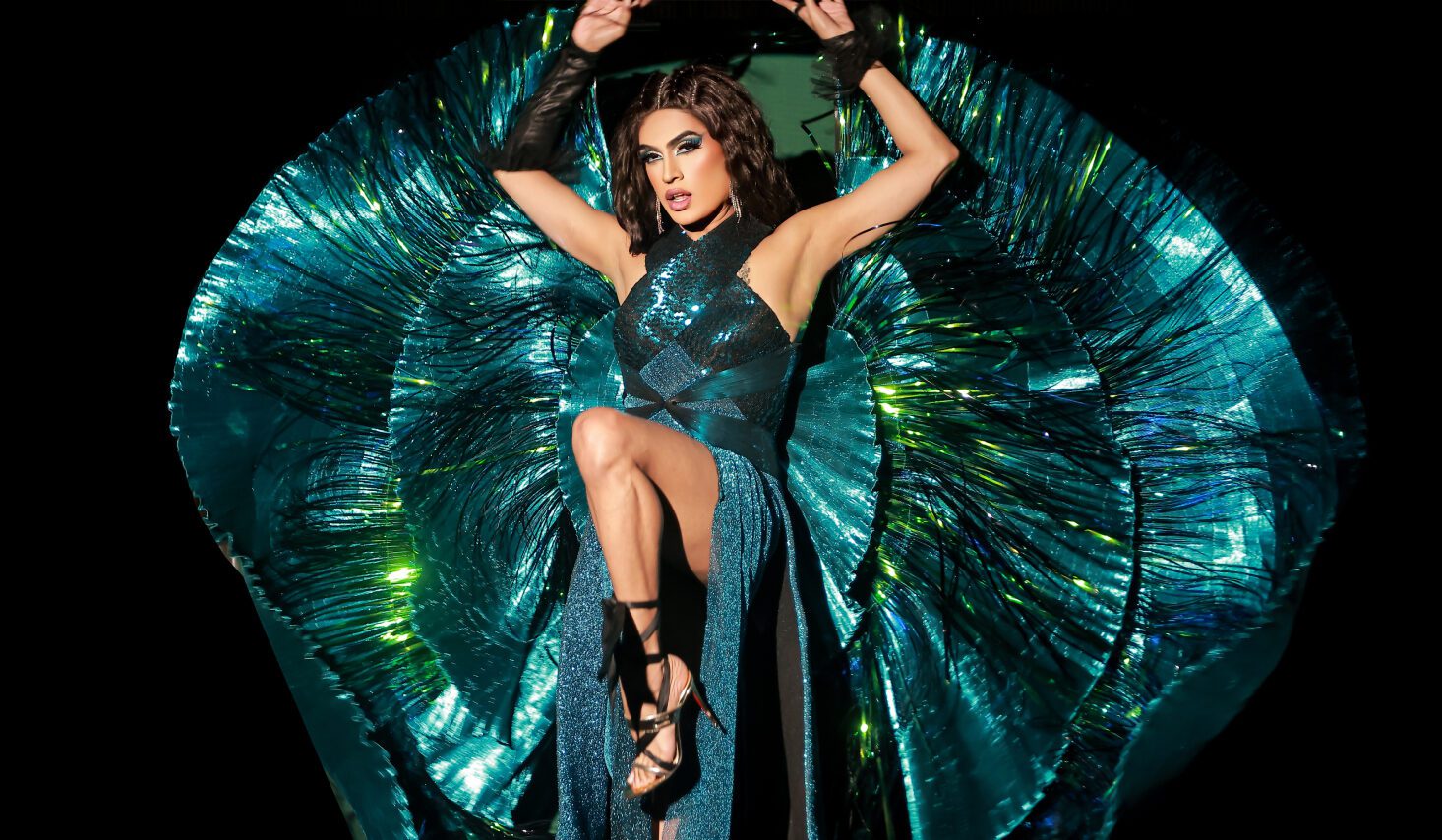
In a previous interview, you spoke about your love for RuPaul and the impact of his appearance on an episode of Sabrina the Teenage Witch. I remember that episode very well!
Yes! We used to get English channels very rarely growing up. Me and my brother used to fight for TV time because we only had one television. I used to be like, ‘No! Now it’s my turn!’ because I saw the preview and that there was this beautiful and phenomenal glamazon. He turned into a she and it was amazing with the beautiful wig and gown. I felt so represented. I felt like, ‘This is me.’ Imagine looking at somebody from a different country, different race, different skin colour, different language… I was spellbound. So thank you, Mother Ru, I’ll collect the cheque for my speech later!
What about role models in India? At the time, were there any prominent LGBTQ+ people that inspired you?
Not really, but there were a lot of activists who eventually started appearing on television shows. There was Laxmi Narayan Tripathi, who is one of the most loud and proud voices out there doing God’s work for my trans community. She was fighting for rights, parading around and making herself available for death threats because of her activism. Rape threats, death threats and acid attack threats are all of the things she’s gone through. On national television, in debates, people have slandered her for her gender. She’s still making her points, and her dignity and integrity broke through their fallacies and arguments with facts and heart. There are all these wonderful people that started coming more on television, and that’s when I felt represented. As a drag artist, I will be funny, I will be goofy, I will be silly, but I will also be intellectually inclined to talk about issues that are here and not going away anytime soon – the way we’re killing each other and fighting each other. I amalgamated this because of the wonderful role models around me.
LGBTQ+ rights in India have slowly progressed over the years, particularly since the decriminalisation of Section 377 in 2018. Has public perception of queer people and drag culture positively increased since then?
India was one of the most evolved countries and one of the richest, financially and culturally. That’s the reason why we were colonised. If we were already a poor country, we wouldn’t be robbed. That’s why I call myself Rani KoHEnur because the ‘KoHEnur’ was taken from India, it’s one of our most precious diamonds. It’s now on the Queen’s crown and it’s huge. Recently, your previous prime minister apologised for the colonisation and I was like, ‘Don’t apologise, just return all of that and we won’t be a third world country anymore!’ I was once in this small town in India, and I was scared for my life. I thought I was going to be stoned or something, and this is the misconception we have with people… When we have not exposed them to this art-form, how can we believe in our minds – our small minds – that they’re not going to like it? I introduced drag to them, in a very small town in the South West area of India, and they loved it. That wow factor is there. They haven’t been introduced to it, so how can we imagine that they’re scared or would not accept it? That’s when I realised that I have to be present. I have to, because how many people have changed their perspective by looking at me on national television? I became exactly the person I wanted, urged and craved. I became that. I had to. I didn’t have a choice. I don’t want another generation to go ahead and think they’re not being represented. Indian cinema is definitely waking up slowly and I just want to fasten the process. I want to throw a bucket of ice on their faces so they write better scripts. It’s happening, I can tell you, because I just signed three films!
Three films?! Rani, congratulations. Can you reveal anything yet, or do you have to remain tight-lipped for now?
Not yet! One is going to be on an OTT platform, one is going to be a theatrical release and the third will be out sometime. We’ll have so much to talk about!
Let’s definitely chat about these films when you can! I also wanted to discuss a certain Emmy Award-winning drag franchise… Since your appearance on Queen of the Universe, viewers have called for you to be the host of Drag Race India, which has been rumoured for some time now. With Drag Race expanding into territories all around the world, it seems inevitable. If the series ever came to fruition, would you like to host?
Who else, darling? Who else? Please, do tell. Do tell! I think we need and deserve a Drag Race India. There are so many amazing artists and in the last two years, there has been this surge of beautiful, beautiful people doing drag. And it’s not just gay men or trans women. I’m thankful to Drag Race for introducing a cis-het male and cisgender woman to participate. This is what I want to tell the community: if you want people to be inclusive, you can’t be exclusive. You can’t claim drag is not for everyone because drag is for everyone. You can’t suppress us. We are here and queer and we matter. I think that, definitely, we need a Drag Race India. I’m going to host it and I will definitely open and close [each episode] with a performance because I can. Of course, Mother Ru would have to sanction it… I want it to happen. I can promise you, there’s going to be so much drama! There’s going to be Bollywood music. The costumes? You’re going to die. The jewellery! The opulence! The fashion! The skin! The hair! The diversity! I live, already. In my head, I’m already on that stage. I live for it.
Besides your three upcoming films and a potential gig on Drag Race India, how can we expect you to (nama)slay the future?
I’m on tour, currently. I have my live shows. I have a couple international projects that are not yet confirmed, but there is this beautiful show that I have been approached for. I also have this wonderful show on YouTube, which is called Main Bhi Rani. We are interviewing the real sheroes of the trans community, and trans women specifically. People from my country believe that trans people can only beg or indulge in sex work. These are women that are entrepreneurs, doctors, and lawyers who have their own businesses. I want to show the country that, even after all that you have subjected them to, here we are.
Queen of the Universe is now streaming on Paramount Plus.
